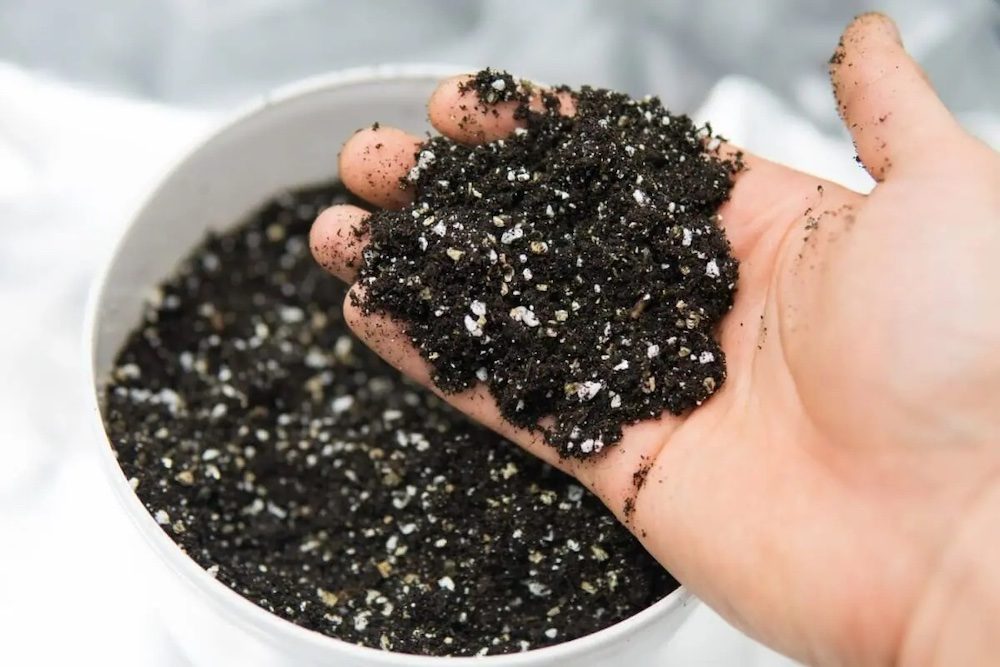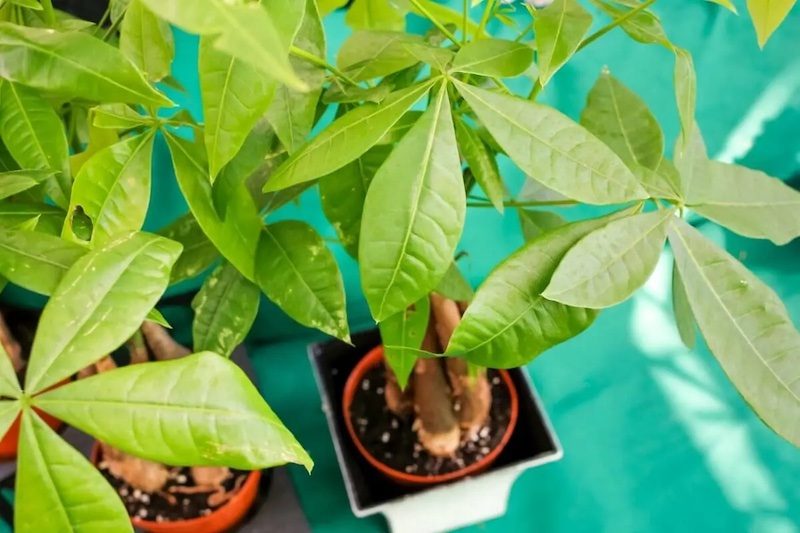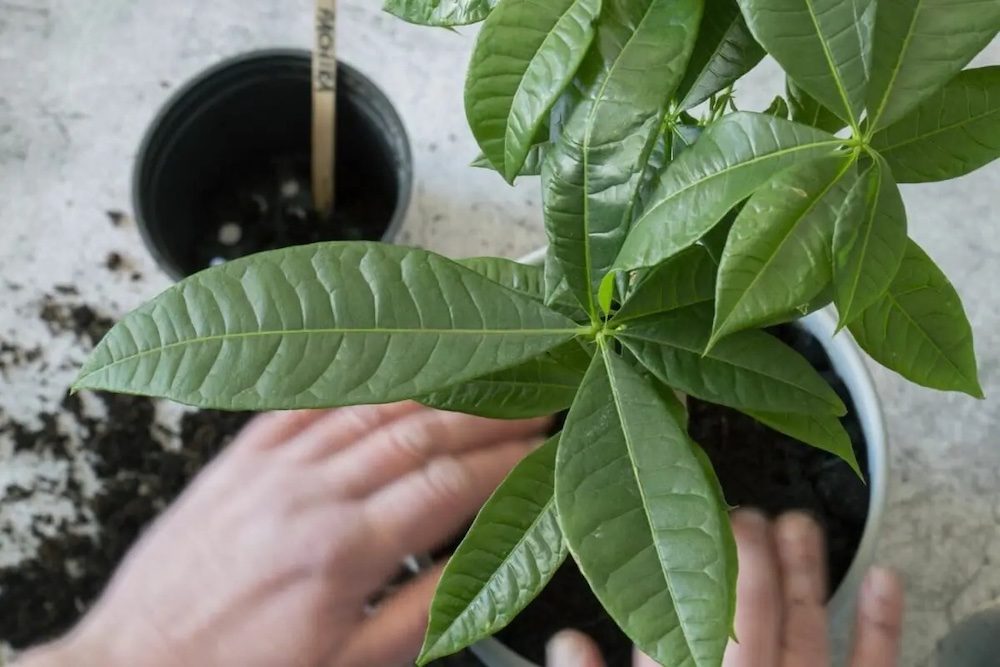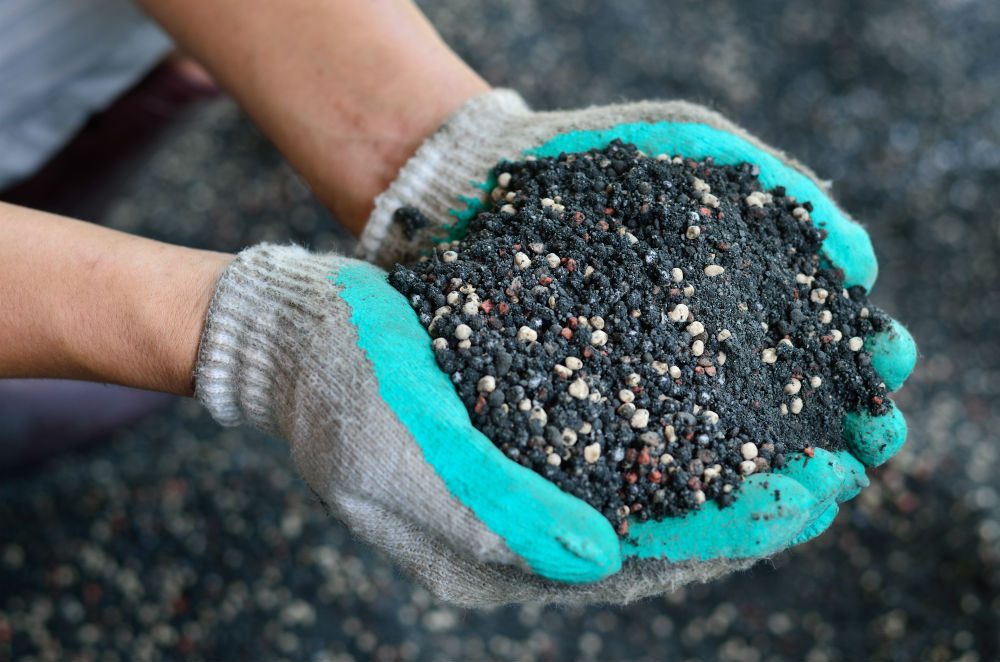- No products in the cart.
In this guide, you’ll learn the soil basics and essential information to select the ideal soil mix for your Money Tree plant (Pachira aquatica). These plants are a popular indoor choice, thanks to their unique braided trunks, attractive palm-shaped leaves, and intrinsic feng shui value. Although money tree plant care is easy, they require the correct environment, including the appropriate potting soil, to flourish.
Money trees thrive in a well-draining, loamy potting mix with a neutral pH range of 6 to 7.5, although they can survive in acidic to alkaline soil. For optimal growth, use a potting mix that includes perlite or vermiculite, peat moss, and coarse sand or coco coir, along with compost. This mixture provides adequate drainage, nutrient retention, and airflow to the roots, promoting healthy growth for your Money Tree plant.
Soil Selection: Why It Matters

Soil quality plays a crucial role in plant health and vitality as it provides essential nutrients, moisture, and pest/disease control while supporting the root system and promoting aeration, gas exchange, and other vital structures. The pH level of the potting mixture can also impact soil quality by affecting its structure, toxicity, nutrient availability, and bacterial growth.
What Are the Main Ingredients in a Potting Soil Mix?

Soil bases and additives are present in both natural soil and commercial or homemade potting mixes, leading to variations in soil composition. Natural soil is typically composed of three primary particles: sand, silt, and clay, with sand being the largest, followed by silt and clay. Soil texture is influenced by the combination of these particles, which scientists use to categorize different soil types.
Soil bases that are commonly used include:
- Clay – Clay has fine mineral particles and contains little organic matter, resulting in poor nutrient content. It tends to hold moisture, which can lead to poor drainage and compaction.
- Sand – Sand has the largest particles among all soil bases. These particles are irregularly shaped and allow for rapid drainage, providing excellent aeration to plant roots.
- Silt – Silt is composed of medium-sized mineral and rock particles.
- Loam – Loam is a type of topsoil that contains a combination of silt, clay, and sand.
- Peat – Peat, also known as turf, is composed of partially decomposed organic matter such as peat moss.
- Chalk – Chalky soils are usually composed of calcium carbonate and have an alkaline pH level. They are also well-draining and often have a gravelly texture.
Common Additives Used in Potting Mixes
Common components are used in various combinations to make potting mixes. Here are some frequently used ingredients in potting soil.
- Organic matter/compost – which consists of decaying organic materials and living organisms such as bacteria and fungi, plays a crucial role in providing nutrients to the soil.
- Sphagnum Moss – Dried sphagnum moss enhances moisture retention, and it is typically utilized in soils that are sandy.
- Coco Coir – Shredded coconut husks are another additive that improves moisture retention in substrates that are naturally dry.
- Vermiculite – Vermiculite is a mineral that contains a variety of minerals, which can provide nutrients to plants while also helping to lighten and aerate soil mixes.
- Pine Bark Fines – Pine bark slivers improve moisture retention and gradually release nutrients as they decompose.
- Pumice – A type of volcanic rock, is added to potting mixes to improve aeration and soil drainage. It is particularly useful in heavy clay soils as it can help to loosen the soil structure.
- Perlite – A type of volcanic glass, helps to lighten soil, maintain loose soil structure, and prevent compaction.
- Sand – Although classified as a soil base, is also utilized as an additive to improve aeration, drainage, and prevent soil compaction.
- Soil activator – A synthetic product that enhances the release of nutrients in the soil, making them more accessible to plants.
- Rocks/Pebbles – Gravel added to soil improves drainage as it allows water to pass through quickly. In arid regions, gravel also helps plant roots to access deeper levels of soil where more water can be found.
Signs That Indicate You’re Using an Inappropriate Soil Mix for Your Money Tree Plant

If the trunk of your money tree feels soft, discolored, or mushy, or if its younger leaves are turning yellow or brown, it could be a sign of root rot caused by soil that is retaining too much moisture.
Another common sign that you may be using the wrong soil mix for your money tree is slow growth or poor leaf production. This could be an indication that the pH level of the soil is not optimal. Money trees can tolerate a wide range of pH levels, but they grow best in a neutral potting mix. If the soil is too acidic or alkaline, it can affect the plant’s ability to absorb nutrients and lead to stunted growth.
Importance of Adequately Draining Soil for Money Tree Plants
Despite being native to swampy areas in Central and South America, money trees cannot tolerate excessive moisture and are highly prone to root rot. Hence, it is crucial to cultivate money trees in pots that have sufficient drainage holes and a well-draining potting mix that facilitates rapid water drainage.
Home Recipe for the Ultimate Soil Mix for Money Tree Plant Care

If you enjoy the process of preparing soil for your plants, you can make a custom potting mix suitable for money tree plant care that is well-draining, neutral, and loamy. Here is a recipe you can use:
- Equal parts of peat moss, perlite or vermiculite, and coarse sand.
- Equal amounts of coco coir, compost, and perlite or vermiculite.
When mixing the ingredients, you may need to add some water to help the mixture blend together evenly. However, you should be careful not to add too much water as this can make the mixture overly moist and difficult to work with.
Starting with the Soil for Good Luck and Prosperity
To keep your money tree plants healthy and bring prosperity, start with the right soil mix. For more tips, check out our guide on how to position money tree plants for optimal care and feng shui benefits.

